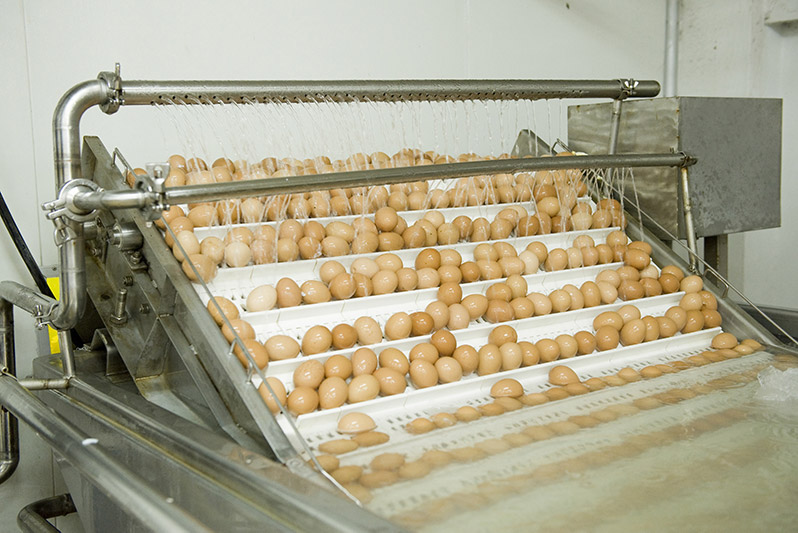Section 4 | Prevention Strategies for Coccidiosis
Industry
Page 23 /
Setting Your Crop Up For Success: Vaccination
For decades, vaccination has been used as a strategy to control coccidiosis and is recognized as a potential alternative for coccidiostats. When infected with Eimeria, birds mount a strong immune response, which is why vaccines can be used (for more information on vaccinations and how they work, check out our FAAST page, Vaccination as a Key Animal Health Tool).
One of the critical areas to consider when using vaccines is how it will be administered. It is imperative to ensure that every chick receives the correct dose to develop immunity against the parasite. It is also important to give the vaccine early in life, such as at the hatchery or immediately after chicks are placed in the barn, to ensure they develop immunity.
There are many different ways it can be administered including:
Spray cabinets
- Vaccine sprayed onto the head, nape, and back of chicks as they pass through the cabinet
- Chicks will preen and peck on the dye from the vaccine leading to immunization
- Practical and economical option
Injection into embryonating eggs
Drinking water
- Water may be withdrawn for a short period of time to ensure chicks are thirsty and will readily consume the vaccine
How Well Do They Work?
The Benefits
Vaccination has been found to be effective at initiating immunity to coccidia and restoring the sensitivity of infectious parasites to coccidiostat programs. This is because vaccination leads to the preferential cycling of drug-sensitive strains1. In other words, vaccination helps minimize the presence of the disease, and when it is present, it is easier to treat because of the specific type of bugs that are present.
The best results are found when a bio-shuttle program is used, where vaccination is used in the hatchery followed by subsequent administration of coccidiostats in feed. This will minimize any intestinal damage that occurs due to the infection with Eimeria2.
The Limitations
On the flip side, vaccination also has some limitations that need to be considered, including:
- Cost
- Risk of causing damage to the birds’ intestines
- Challenges with consistent application to ensure immunization
- Slow development of immunity to coccidia
In particular, during the wet months or in flocks with excessive build up of coccidia, clinical disease might still occur following vaccination. It is recommended that vaccines be given during warmer months when the burden of coccidia is lower (there are fewer oocysts present within the host and therefore in the environment). To achieve complete protection from vaccination, exposure to the parasite is still necessary in the environment for the bird’s immune system to be able to identify the pathogen to mount an immune response. Vaccines may need to be rotated on a bi-annual basis to ensure their continued effectiveness.
Work with your veterinarian to develop a strategy to use vaccinations on your farm, and ensure your hatchery is using a vaccination protocol that is in line with your goals for coccidia prevention. Remember, vaccines are used to prevent an outbreak and are not effective if introduced as a reactive measure!
References:
- Chapman, H.D., and T.K. Jeffers. 2014. Vaccination of chickens against coccidiosis ameliorates drug resistance in commercial poultry production. J Parasitology Drugs Design. 4:214-217.
- Mathis, G.F., J. Schaeffer, K. Cookson, K. Dickson, M. LaVorgna, and D. Waldrip. 2014. Effect of lasalocid or salinomycin administration on performance and immunity following coccidia vaccination of commercial broilers. J Applied Poultry Res. 23:577-585.
